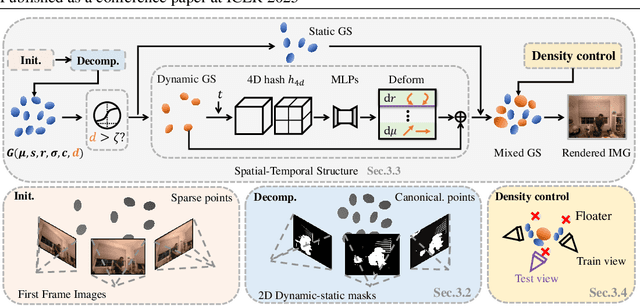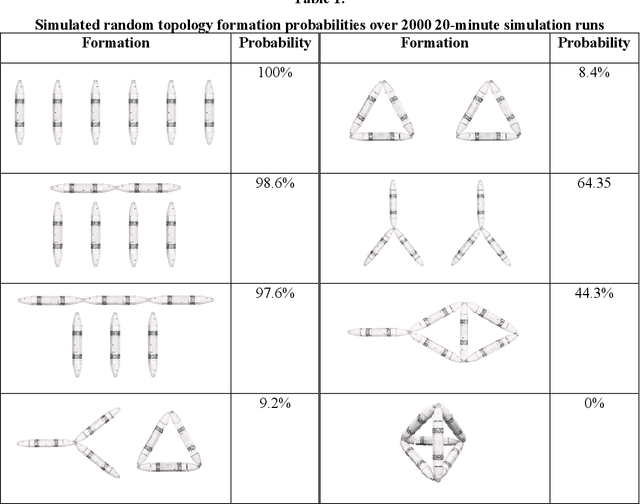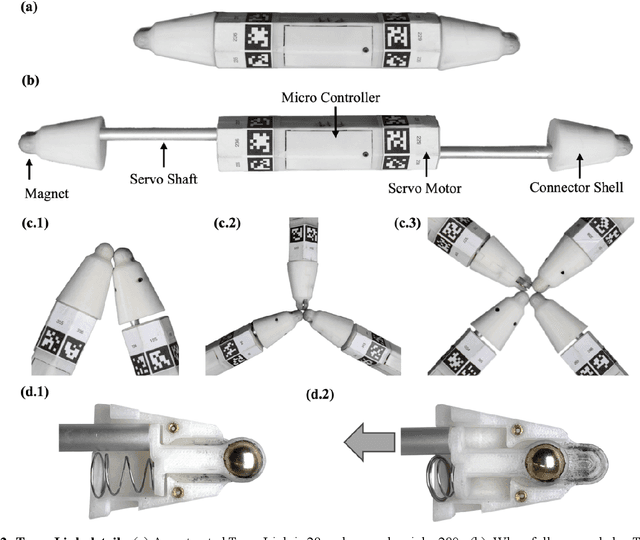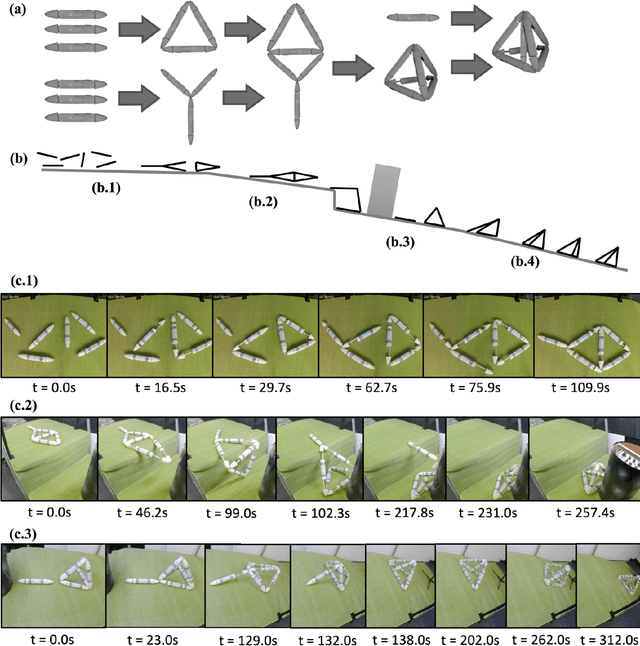Jiahao Wu
Personalized Treatment Outcome Prediction from Scarce Data via Dual-Channel Knowledge Distillation and Adaptive Fusion
Oct 30, 2025Abstract:Personalized treatment outcome prediction based on trial data for small-sample and rare patient groups is critical in precision medicine. However, the costly trial data limit the prediction performance. To address this issue, we propose a cross-fidelity knowledge distillation and adaptive fusion network (CFKD-AFN), which leverages abundant but low-fidelity simulation data to enhance predictions on scarce but high-fidelity trial data. CFKD-AFN incorporates a dual-channel knowledge distillation module to extract complementary knowledge from the low-fidelity model, along with an attention-guided fusion module to dynamically integrate multi-source information. Experiments on treatment outcome prediction for the chronic obstructive pulmonary disease demonstrates significant improvements of CFKD-AFN over state-of-the-art methods in prediction accuracy, ranging from 6.67\% to 74.55\%, and strong robustness to varying high-fidelity dataset sizes. Furthermore, we extend CFKD-AFN to an interpretable variant, enabling the exploration of latent medical semantics to support clinical decision-making.
MelCap: A Unified Single-Codebook Neural Codec for High-Fidelity Audio Compression
Oct 02, 2025Abstract:Neural audio codecs have recently emerged as powerful tools for high-quality and low-bitrate audio compression, leveraging deep generative models to learn latent representations of audio signals. However, existing approaches either rely on a single quantizer that only processes speech domain, or on multiple quantizers that are not well suited for downstream tasks. To address this issue, we propose MelCap, a unified "one-codebook-for-all" neural codec that effectively handles speech, music, and general sound. By decomposing audio reconstruction into two stages, our method preserves more acoustic details than previous single-codebook approaches, while achieving performance comparable to mainstream multi-codebook methods. In the first stage, audio is transformed into mel-spectrograms, which are compressed and quantized into compact single tokens using a 2D tokenizer. A perceptual loss is further applied to mitigate the over-smoothing artifacts observed in spectrogram reconstruction. In the second stage, a Vocoder recovers waveforms from the mel discrete tokens in a single forward pass, enabling real-time decoding. Both objective and subjective evaluations demonstrate that MelCap achieves quality on comparable to state-of-the-art multi-codebook codecs, while retaining the computational simplicity of a single-codebook design, thereby providing an effective representation for downstream tasks.
LocalDyGS: Multi-view Global Dynamic Scene Modeling via Adaptive Local Implicit Feature Decoupling
Jul 03, 2025Abstract:Due to the complex and highly dynamic motions in the real world, synthesizing dynamic videos from multi-view inputs for arbitrary viewpoints is challenging. Previous works based on neural radiance field or 3D Gaussian splatting are limited to modeling fine-scale motion, greatly restricting their application. In this paper, we introduce LocalDyGS, which consists of two parts to adapt our method to both large-scale and fine-scale motion scenes: 1) We decompose a complex dynamic scene into streamlined local spaces defined by seeds, enabling global modeling by capturing motion within each local space. 2) We decouple static and dynamic features for local space motion modeling. A static feature shared across time steps captures static information, while a dynamic residual field provides time-specific features. These are combined and decoded to generate Temporal Gaussians, modeling motion within each local space. As a result, we propose a novel dynamic scene reconstruction framework to model highly dynamic real-world scenes more realistically. Our method not only demonstrates competitive performance on various fine-scale datasets compared to state-of-the-art (SOTA) methods, but also represents the first attempt to model larger and more complex highly dynamic scenes. Project page: https://wujh2001.github.io/LocalDyGS/.
Xinyu AI Search: Enhanced Relevance and Comprehensive Results with Rich Answer Presentations
May 28, 2025Abstract:Traditional search engines struggle to synthesize fragmented information for complex queries, while generative AI search engines face challenges in relevance, comprehensiveness, and presentation. To address these limitations, we introduce Xinyu AI Search, a novel system that incorporates a query-decomposition graph to dynamically break down complex queries into sub-queries, enabling stepwise retrieval and generation. Our retrieval pipeline enhances diversity through multi-source aggregation and query expansion, while filtering and re-ranking strategies optimize passage relevance. Additionally, Xinyu AI Search introduces a novel approach for fine-grained, precise built-in citation and innovates in result presentation by integrating timeline visualization and textual-visual choreography. Evaluated on recent real-world queries, Xinyu AI Search outperforms eight existing technologies in human assessments, excelling in relevance, comprehensiveness, and insightfulness. Ablation studies validate the necessity of its key sub-modules. Our work presents the first comprehensive framework for generative AI search engines, bridging retrieval, generation, and user-centric presentation.
Safe Delta: Consistently Preserving Safety when Fine-Tuning LLMs on Diverse Datasets
May 17, 2025Abstract:Large language models (LLMs) have shown great potential as general-purpose AI assistants across various domains. To fully leverage this potential in specific applications, many companies provide fine-tuning API services, enabling users to upload their own data for LLM customization. However, fine-tuning services introduce a new safety threat: user-uploaded data, whether harmful or benign, can break the model's alignment, leading to unsafe outputs. Moreover, existing defense methods struggle to address the diversity of fine-tuning datasets (e.g., varying sizes, tasks), often sacrificing utility for safety or vice versa. To address this issue, we propose Safe Delta, a safety-aware post-training defense method that adjusts the delta parameters (i.e., the parameter change before and after fine-tuning). Specifically, Safe Delta estimates the safety degradation, selects delta parameters to maximize utility while limiting overall safety loss, and applies a safety compensation vector to mitigate residual safety loss. Through extensive experiments on four diverse datasets with varying settings, our approach consistently preserves safety while ensuring that the utility gain from benign datasets remains unaffected.
A Comprehensive Survey in LLM(-Agent) Full Stack Safety: Data, Training and Deployment
Apr 22, 2025Abstract:The remarkable success of Large Language Models (LLMs) has illuminated a promising pathway toward achieving Artificial General Intelligence for both academic and industrial communities, owing to their unprecedented performance across various applications. As LLMs continue to gain prominence in both research and commercial domains, their security and safety implications have become a growing concern, not only for researchers and corporations but also for every nation. Currently, existing surveys on LLM safety primarily focus on specific stages of the LLM lifecycle, e.g., deployment phase or fine-tuning phase, lacking a comprehensive understanding of the entire "lifechain" of LLMs. To address this gap, this paper introduces, for the first time, the concept of "full-stack" safety to systematically consider safety issues throughout the entire process of LLM training, deployment, and eventual commercialization. Compared to the off-the-shelf LLM safety surveys, our work demonstrates several distinctive advantages: (I) Comprehensive Perspective. We define the complete LLM lifecycle as encompassing data preparation, pre-training, post-training, deployment and final commercialization. To our knowledge, this represents the first safety survey to encompass the entire lifecycle of LLMs. (II) Extensive Literature Support. Our research is grounded in an exhaustive review of over 800+ papers, ensuring comprehensive coverage and systematic organization of security issues within a more holistic understanding. (III) Unique Insights. Through systematic literature analysis, we have developed reliable roadmaps and perspectives for each chapter. Our work identifies promising research directions, including safety in data generation, alignment techniques, model editing, and LLM-based agent systems. These insights provide valuable guidance for researchers pursuing future work in this field.
SemDiff: Generating Natural Unrestricted Adversarial Examples via Semantic Attributes Optimization in Diffusion Models
Apr 16, 2025Abstract:Unrestricted adversarial examples (UAEs), allow the attacker to create non-constrained adversarial examples without given clean samples, posing a severe threat to the safety of deep learning models. Recent works utilize diffusion models to generate UAEs. However, these UAEs often lack naturalness and imperceptibility due to simply optimizing in intermediate latent noises. In light of this, we propose SemDiff, a novel unrestricted adversarial attack that explores the semantic latent space of diffusion models for meaningful attributes, and devises a multi-attributes optimization approach to ensure attack success while maintaining the naturalness and imperceptibility of generated UAEs. We perform extensive experiments on four tasks on three high-resolution datasets, including CelebA-HQ, AFHQ and ImageNet. The results demonstrate that SemDiff outperforms state-of-the-art methods in terms of attack success rate and imperceptibility. The generated UAEs are natural and exhibit semantically meaningful changes, in accord with the attributes' weights. In addition, SemDiff is found capable of evading different defenses, which further validates its effectiveness and threatening.
Nano-3D: Metasurface-Based Neural Depth Imaging
Mar 20, 2025



Abstract:Depth imaging is a foundational building block for broad applications, such as autonomous driving and virtual/augmented reality. Traditionally, depth cameras have relied on time-of-flight sensors or multi-lens systems to achieve physical depth measurements. However, these systems often face a trade-off between a bulky form factor and imprecise approximations, limiting their suitability for spatially constrained scenarios. Inspired by the emerging advancements of nano-optics, we present Nano-3D, a metasurface-based neural depth imaging solution with an ultra-compact footprint. Nano-3D integrates our custom-fabricated 700 nm thick TiO2 metasurface with a multi-module deep neural network to extract precise metric depth information from monocular metasurface-polarized imagery. We demonstrate the effectiveness of Nano-3D with both simulated and physical experiments. We hope the exhibited success paves the way for the community to bridge future graphics systems with emerging nanomaterial technologies through novel computational approaches.
Swift4D:Adaptive divide-and-conquer Gaussian Splatting for compact and efficient reconstruction of dynamic scene
Mar 16, 2025



Abstract:Novel view synthesis has long been a practical but challenging task, although the introduction of numerous methods to solve this problem, even combining advanced representations like 3D Gaussian Splatting, they still struggle to recover high-quality results and often consume too much storage memory and training time. In this paper we propose Swift4D, a divide-and-conquer 3D Gaussian Splatting method that can handle static and dynamic primitives separately, achieving a good trade-off between rendering quality and efficiency, motivated by the fact that most of the scene is the static primitive and does not require additional dynamic properties. Concretely, we focus on modeling dynamic transformations only for the dynamic primitives which benefits both efficiency and quality. We first employ a learnable decomposition strategy to separate the primitives, which relies on an additional parameter to classify primitives as static or dynamic. For the dynamic primitives, we employ a compact multi-resolution 4D Hash mapper to transform these primitives from canonical space into deformation space at each timestamp, and then mix the static and dynamic primitives to produce the final output. This divide-and-conquer method facilitates efficient training and reduces storage redundancy. Our method not only achieves state-of-the-art rendering quality while being 20X faster in training than previous SOTA methods with a minimum storage requirement of only 30MB on real-world datasets. Code is available at https://github.com/WuJH2001/swift4d.
Robot Metabolism: Towards machines that can grow by consuming other machines
Nov 17, 2024



Abstract:Biological lifeforms can heal, grow, adapt, and reproduce -- abilities essential for sustained survival and development. In contrast, robots today are primarily monolithic machines with limited ability to self-repair, physically develop, or incorporate material from their environments. A key challenge to such physical adaptation has been that while robot minds are rapidly evolving new behaviors through AI, their bodies remain closed systems, unable to systematically integrate new material to grow or heal. We argue that open-ended physical adaptation is only possible when robots are designed using only a small repertoire of simple modules. This allows machines to mechanically adapt by consuming parts from other machines or their surroundings and shedding broken components. We demonstrate this principle using a truss modular robot platform composed of one-dimensional actuated bars. We show how robots in this space can grow bigger, faster, and more capable by consuming materials from their environment and from other robots. We suggest that machine metabolic processes akin to the one demonstrated here will be an essential part of any sustained future robot ecology.
 Add to Chrome
Add to Chrome Add to Firefox
Add to Firefox Add to Edge
Add to Edge